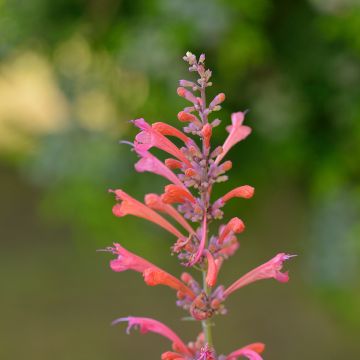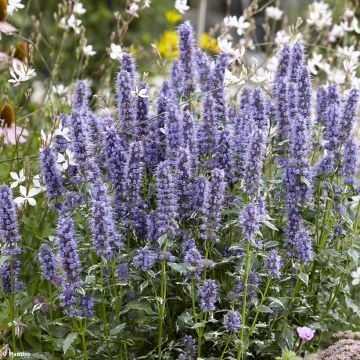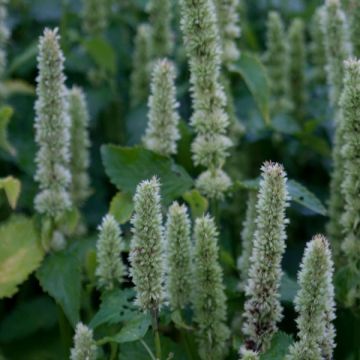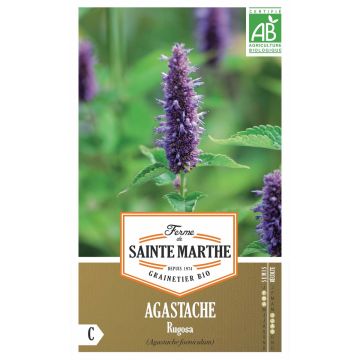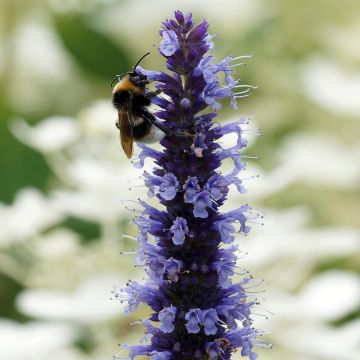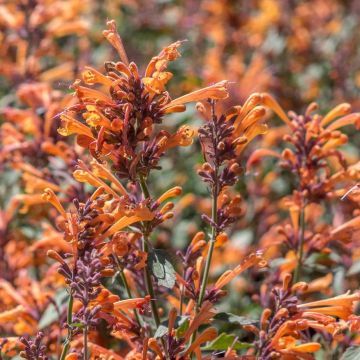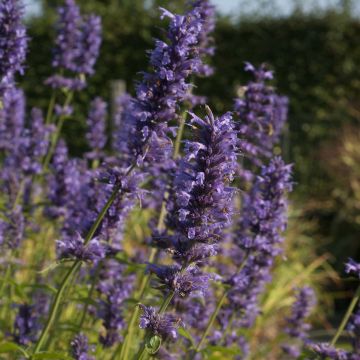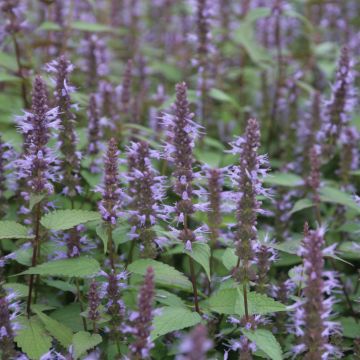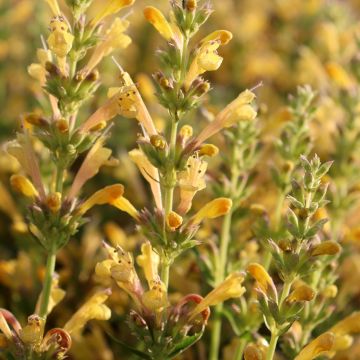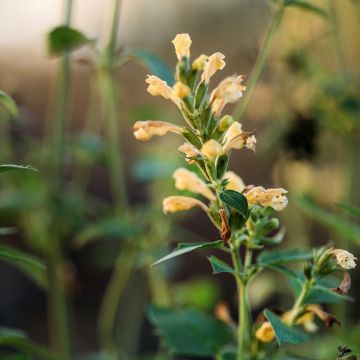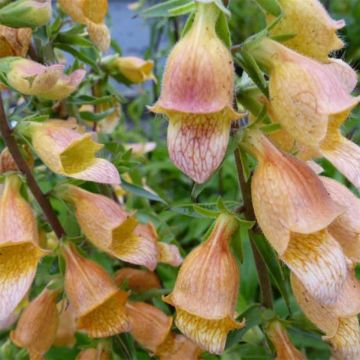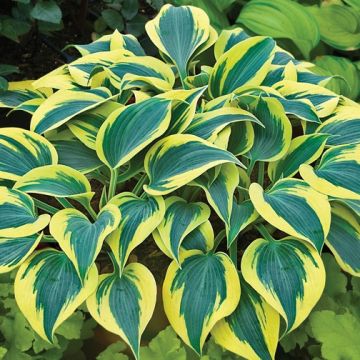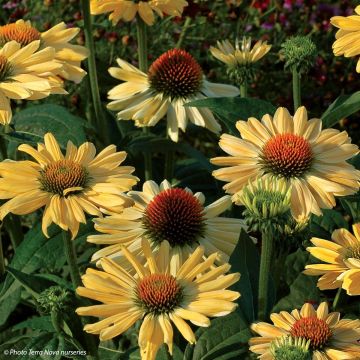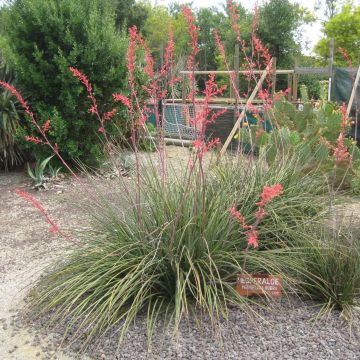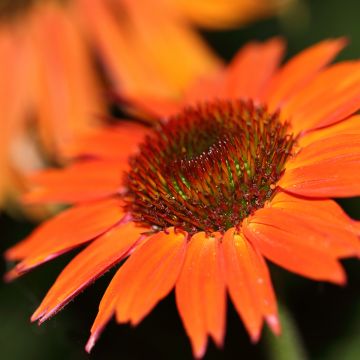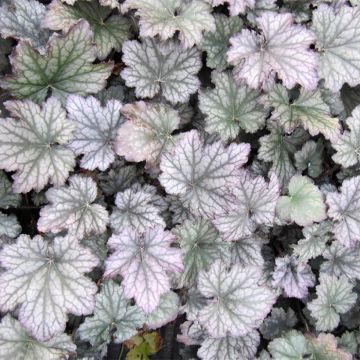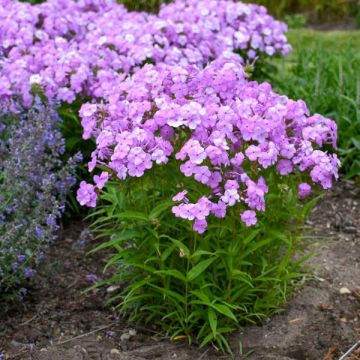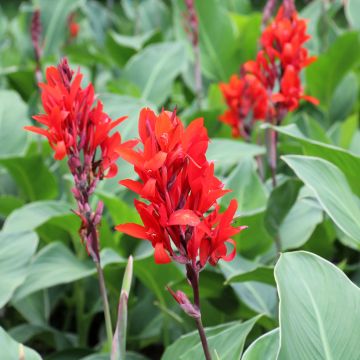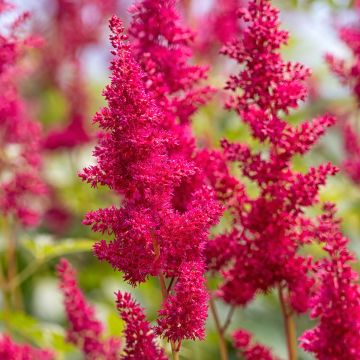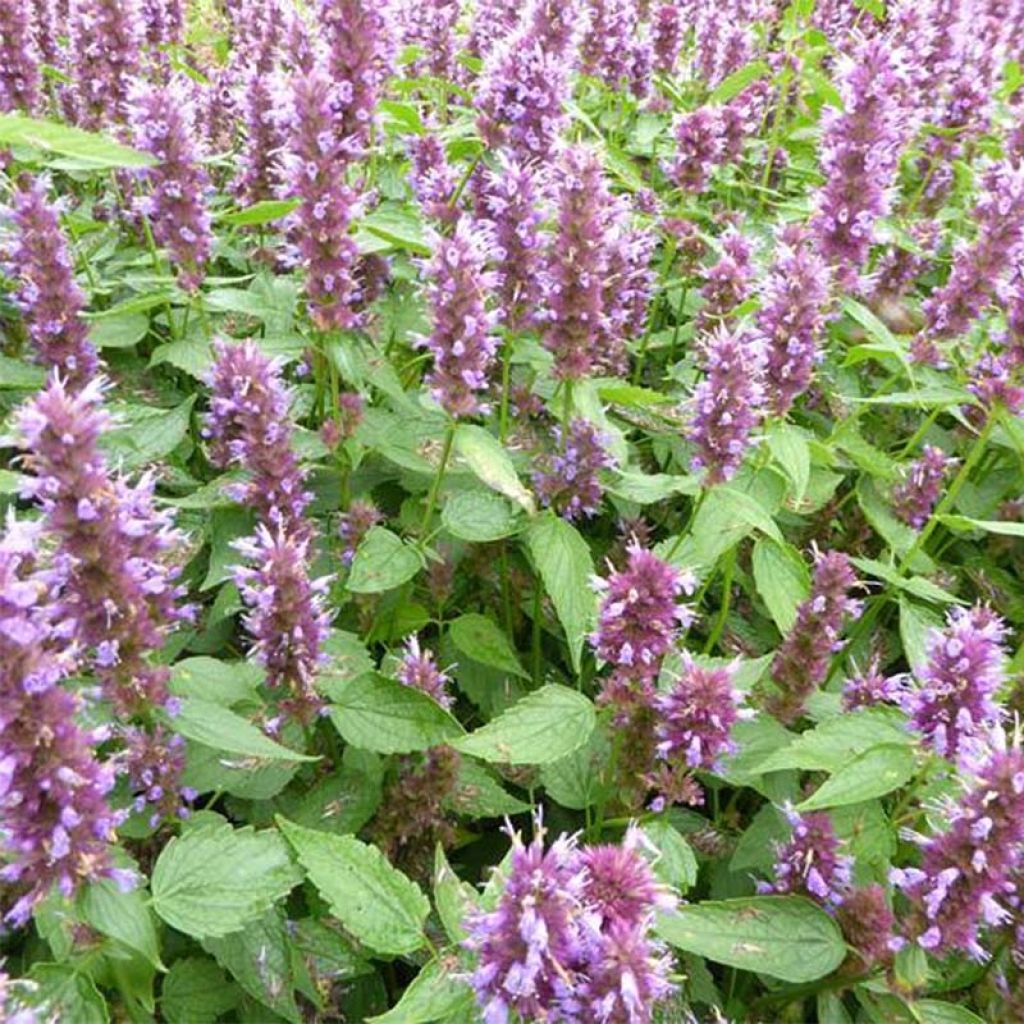

Agastache Beelicious Purple
Agastache Beelicious Purple
Agastache Beelicious Purple ‘Agapd’
Anise Hyssop, Giant Hyssop
This item cannot be shipped to the selected country
Delivery charge from €5.90
More information
Schedule delivery date,
and select date in basket
This plant carries a 12 months recovery warranty
More information
We guarantee the quality of our plants for a full growing cycle, and will replace at our expense any plant that fails to recover under normal climatic and planting conditions.
From €5.90 for pickup delivery and €6.90 for home delivery
Express home delivery from €8.90.
Does this plant fit my garden?
Set up your Plantfit profile →
Description
The Agastache 'Beelicious Purple' is a recent, compact and bushy variety that is appreciated for both its generous flowering and its hardiness and ease of cultivation. It is both a nectar-rich plant, aromatic and perennial ornamental plant, offering beautiful spikes throughout the summer, where small flowers of bright purple-violet are tightly packed, animated by the incessant flight of butterflies and bees. A fragrant, versatile plant, equally at home in a pot on the terrace as in a sunny border or in an herbaceous bed.
The Agastache 'Beelicious Purple' is a very recent Dutch horticultural hybrid belonging to the family Lamiaceae, just like its cousins the salvias. This herbaceous perennial, hardy down to -20°C (1°F) in well-drained soil, quickly forms a small upright clump, averaging 45 cm (18in) high and 30 cm (12in) wide. Its angular stems bear elongated, triangular-shaped leaves with toothed edges, dark green in colour. They emit a very pleasant fragrance when crushed. Flowering lasts from June to October, without interruption, in the form of densely packed upright inflorescences, of considerable size considering the plant's stature. Each small mauve tubular flower is surrounded by purple bracts. This particularly honey-rich and nectar-rich flowering attracts a large number of pollinating insects. The above-ground vegetation, deciduous, disappears in winter and re-emerges in spring from the plant's stump.
The Agastache 'Beelicious Purple' is cultivated in sunny country-style flower beds and borders, but also in pots on the terrace. In hot regions, it should never lack water during flowering. In cooler regions, the soil should be well-drained. A carefree perennial, it happily accompanies grasses (such as stipas, eragrostis, pennisetums), herbaceous salvias, perennial geraniums, flamboyant heleniums, and asters. It also pairs very well with yellow or orange shrubby potentillas, for example. In the vegetable garden, it can be planted alongside thyme, savory, chervil, or basil. The dried flowers keep well in bouquets. The leaves are traditionally used in cooking as a substitute for anise, or in herbal teas after drying.
The highly fragrant flowers and leaves of Agastache are edible and delicious in salads or fish dishes.
Report an error about the product description
Agastache Beelicious Purple in pictures
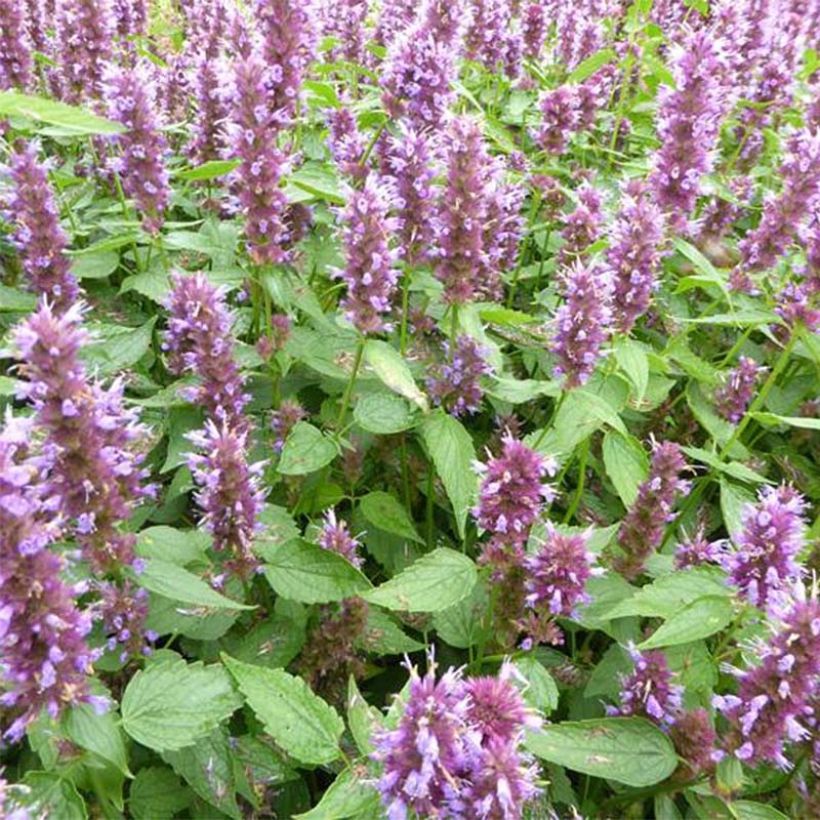

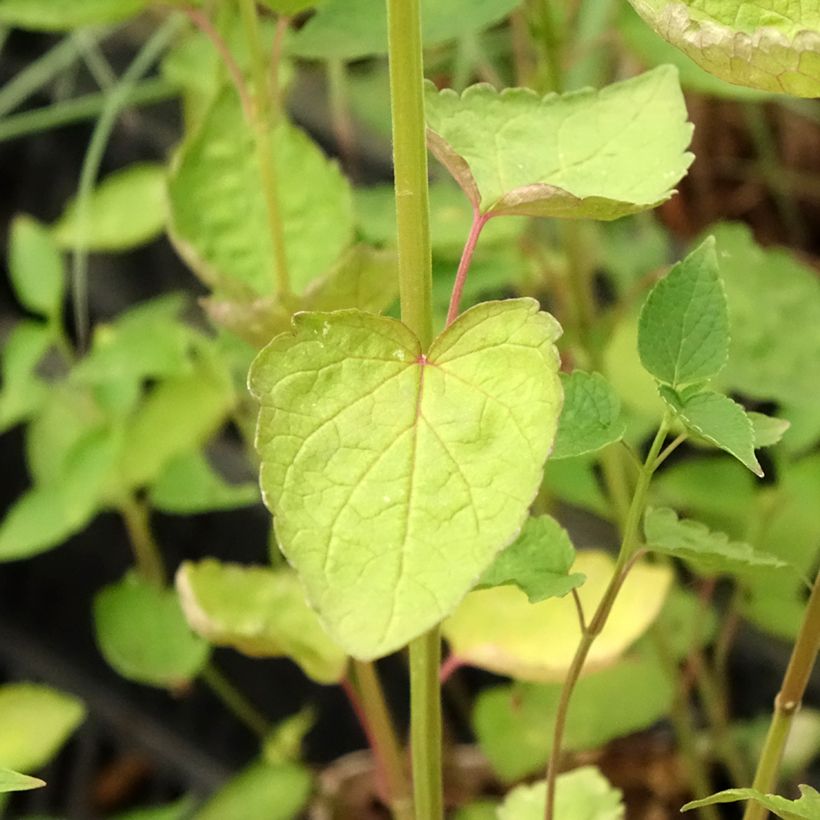

Flowering
Foliage
Plant habit
Botanical data
Agastache
Beelicious Purple ‘Agapd’
Lamiaceae
Anise Hyssop, Giant Hyssop
Cultivar or hybrid
Other Agastache
Planting and care
The Agastache Beelicious Purple is a plant that enjoys the sun, but is content with any good, well-drained garden soil, whether it be clayey or sandy. In heavy soil, dig a hole 30 cm (12in) in all directions, mix gravel with the soil from your garden and install the seedling on this draining mixture. This plant can withstand heavy frost (up to -20°C (1°F)) under these conditions. The soil that welcomes it must be fertile, loose, well-drained but rather moist to support flowering. The plant can tolerate periods of temporary drought, which nevertheless reduce flowering.
Planting period
Intended location
Care
-
, onOrder confirmed
Reply from on Promesse de fleurs
Summer flowering perennials
Haven't found what you were looking for?
Hardiness is the lowest winter temperature a plant can endure without suffering serious damage or even dying. However, hardiness is affected by location (a sheltered area, such as a patio), protection (winter cover) and soil type (hardiness is improved by well-drained soil).

Photo Sharing Terms & Conditions
In order to encourage gardeners to interact and share their experiences, Promesse de fleurs offers various media enabling content to be uploaded onto its Site - in particular via the ‘Photo sharing’ module.
The User agrees to refrain from:
- Posting any content that is illegal, prejudicial, insulting, racist, inciteful to hatred, revisionist, contrary to public decency, that infringes on privacy or on the privacy rights of third parties, in particular the publicity rights of persons and goods, intellectual property rights, or the right to privacy.
- Submitting content on behalf of a third party;
- Impersonate the identity of a third party and/or publish any personal information about a third party;
In general, the User undertakes to refrain from any unethical behaviour.
All Content (in particular text, comments, files, images, photos, videos, creative works, etc.), which may be subject to property or intellectual property rights, image or other private rights, shall remain the property of the User, subject to the limited rights granted by the terms of the licence granted by Promesse de fleurs as stated below. Users are at liberty to publish or not to publish such Content on the Site, notably via the ‘Photo Sharing’ facility, and accept that this Content shall be made public and freely accessible, notably on the Internet.
Users further acknowledge, undertake to have ,and guarantee that they hold all necessary rights and permissions to publish such material on the Site, in particular with regard to the legislation in force pertaining to any privacy, property, intellectual property, image, or contractual rights, or rights of any other nature. By publishing such Content on the Site, Users acknowledge accepting full liability as publishers of the Content within the meaning of the law, and grant Promesse de fleurs, free of charge, an inclusive, worldwide licence for the said Content for the entire duration of its publication, including all reproduction, representation, up/downloading, displaying, performing, transmission, and storage rights.
Users also grant permission for their name to be linked to the Content and accept that this link may not always be made available.
By engaging in posting material, Users consent to their Content becoming automatically accessible on the Internet, in particular on other sites and/or blogs and/or web pages of the Promesse de fleurs site, including in particular social pages and the Promesse de fleurs catalogue.
Users may secure the removal of entrusted content free of charge by issuing a simple request via our contact form.
The flowering period indicated on our website applies to countries and regions located in USDA zone 8 (France, the United Kingdom, Ireland, the Netherlands, etc.)
It will vary according to where you live:
- In zones 9 to 10 (Italy, Spain, Greece, etc.), flowering will occur about 2 to 4 weeks earlier.
- In zones 6 to 7 (Germany, Poland, Slovenia, and lower mountainous regions), flowering will be delayed by 2 to 3 weeks.
- In zone 5 (Central Europe, Scandinavia), blooming will be delayed by 3 to 5 weeks.
In temperate climates, pruning of spring-flowering shrubs (forsythia, spireas, etc.) should be done just after flowering.
Pruning of summer-flowering shrubs (Indian Lilac, Perovskia, etc.) can be done in winter or spring.
In cold regions as well as with frost-sensitive plants, avoid pruning too early when severe frosts may still occur.
The planting period indicated on our website applies to countries and regions located in USDA zone 8 (France, United Kingdom, Ireland, Netherlands).
It will vary according to where you live:
- In Mediterranean zones (Marseille, Madrid, Milan, etc.), autumn and winter are the best planting periods.
- In continental zones (Strasbourg, Munich, Vienna, etc.), delay planting by 2 to 3 weeks in spring and bring it forward by 2 to 4 weeks in autumn.
- In mountainous regions (the Alps, Pyrenees, Carpathians, etc.), it is best to plant in late spring (May-June) or late summer (August-September).
The harvesting period indicated on our website applies to countries and regions in USDA zone 8 (France, England, Ireland, the Netherlands).
In colder areas (Scandinavia, Poland, Austria...) fruit and vegetable harvests are likely to be delayed by 3-4 weeks.
In warmer areas (Italy, Spain, Greece, etc.), harvesting will probably take place earlier, depending on weather conditions.
The sowing periods indicated on our website apply to countries and regions within USDA Zone 8 (France, UK, Ireland, Netherlands).
In colder areas (Scandinavia, Poland, Austria...), delay any outdoor sowing by 3-4 weeks, or sow under glass.
In warmer climes (Italy, Spain, Greece, etc.), bring outdoor sowing forward by a few weeks.

































